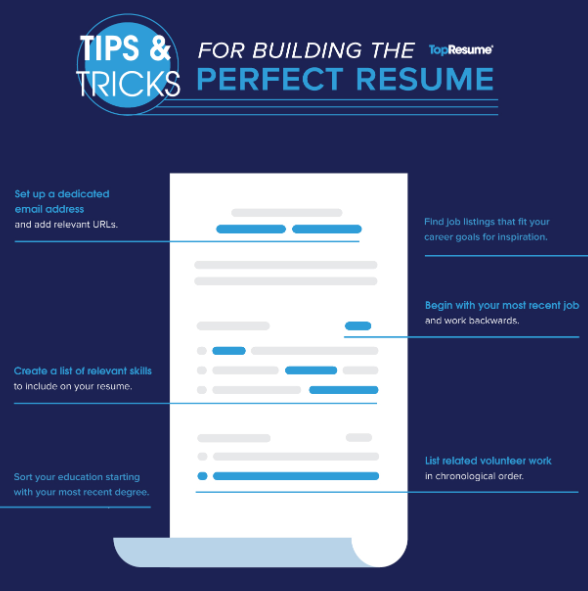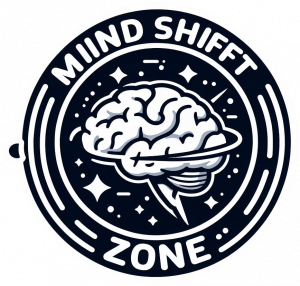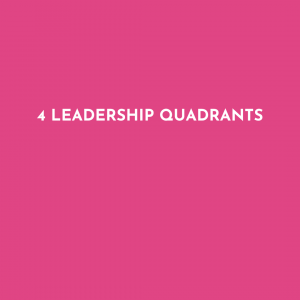Follow our step-by-step tips for updating your resumé and creating a professional online presence.
Have you ever thought that you want to make a change and step out of your comfort zone to pursue another career path? Are you looking to apply to your first real job, but don’t know where to start? When the time comes to search for new opportunities, it can be an equally exciting and daunting experience, regardless of your education or career background. Two recurring themes present themselves as barriers to getting hired: an out-of-date (or incomplete) resumé and lack of an online presence.
The good news is that there are plenty of resources available to help refresh and overhaul your resumé and online presence when planning for a change in your professional life. With fierce competition in the marketplace, it’s certainly worth investing some time to help you stand out from the crowd.
Top tips for resumé writing
Whether you have an existing resumé that needs updating or if you are new to the job market and starting from scratch, your resumé and online presence should be a shining summary of who you are and your skills.
Before putting pen to paper, think about your goal. Do you plan to pursue a similar position at a different company? Do you want a complete career change? Are you a recent graduate new to the job market? Are you going for a promotion at your current company? It’s simple to adapt your resumé to reflect the education and transferable skills you possess.
Understanding your end goal will help you create a brilliant resumé.
1. Decide on your formatting
The first step in creating a resumé is to identify a format that reflects your own personal style and is suitable for your industry. You want to find a style that is creative and stands out, but is not so flashy that it distracts from the content. Things like infographics and colour can grab someone’s attention, so make sure that it is used purposefully.
If you’re on LinkedIn, you can download your profile as a PDF. Sometimes, this alone can be a suitable resumé.
If you have access to Microsoft Word, there are plenty of templates available. For a creative look and finish, check out Enhancv. Even the former CEO of Yahoo, Marissa Mayer, has used this.
Canva is another brilliant tool that is free to use and allows you to create a unique and creative resumé that will ensure you stand out from the resumé crowd.
In general, be mindful of the fonts and the layout you choose because this will be a reflection of you.
2. The art of resumé brevity
Your resumé should be no more than two pages long. Keep in mind that the average recruiter takes less than 10 seconds to judge your resumé. Here are some ways to avoid creating a resumé that is cluttered and hard to read:
- Use a simple layout with clear headings and section titles
- Make sure there is a fair amount of white space
- Use a font that is professional, modern, and easy to read such as Arial, Times New Roman, or Calibri
- Avoid using multiple columns so that the readers’ eyes can flow swiftly across the page
3. Contact information including an online resumé
The top of your resumé should contain your contact details including a professional email address, phone number, and website if you have one. Your email address should be professional (Gmail is the most widely used platform). [email protected] isn’t likely to get a call back from a recruiter.
This is also where you can share your LinkedIn profile; this is your online resumé, so make sure it is up to date. You do not need to include your age, sex or ethnicity.
4. Start with your work history
In today’s ever-changing landscape, it’s not uncommon to identify as a career changer or to have a career break. If you’ve been out of work, you may want to add a short line at the top of your ‘career history’ section explaining your situation. Never state that you were unhappy in work in previous roles on your resumé or in an interview; instead use it as a positive opportunity, highlighting the skills you gained.
If you are looking at a specific job, take a look at the job description. If your previous roles have taught you any skills that would be relevant, make sure you state this. In fact, many online hiring portals use keyword searches when filing through resumés, so you might miss out on an opportunity entirely if these words are not included.
If you’ve had lots of employment, then only list the most recent few, using bullet points for any other notable roles held in the past.
Finally, if you have previously had any promotions, succeeded at any projects, or achieved any accolades, it is important to include those. It will show the recruiter that you are capable of making progress in your career.
5. Summary of your education
The next section should cover your academic qualifications. Include relevant degrees, certificates and licences here. Put your highest education level first, e.g. a university degree would be listed before a college certificate.
6. Relevant skills
This section should be brief to highlight any additional skills you can bring to the position. It can include things like a full clean driver’s licence, social media marketing, coding languages, WordPress editing and so forth. In this digital era, demonstrating computer programming or social media skills with an online presence can help to set you apart from others.
You might also want to include soft skills if you are sure that you can perform them. Soft skills are more personal attributes instead of tactical skills, including things such as interpersonal communication, leadership, and teamwork.
Finally, if you have a mentor or coach, ask for a second opinion before you submit your resumé. They might have a clearer idea of your skills than you do.
7. Hobbies and interests
If you do not have enough space on your resumé to show your skills and work experience, this section would be the one to leave out. This section is great if your hobbies and interests are impressive or relevant to the job. If you decide to include this section, make sure to keep it to-the-point and honest; it might evoke small talk during interviews, so you’ll want to speak knowledgeably.
8. Spell Check
When you are finished writing the content in your resumé, it is absolutely necessary to proofread. Spelling and grammar errors give off an impression of carelessness and will prevent you from getting the job before you even interview.
Proofreading requires more than just having a computer fix your spelling mistakes. If you mistakenly write “form” instead of “from,” the error will go undetected. For this reason, it is important to read your resumé thoroughly, and even have some friends or family look at it, too.
9. Cover letters
Cover letters go hand-in-hand with resumé. Your cover letter should offer a simple introduction about yourself.
You may want to briefly address why you’ve been out of the job market, but keep it brief and confident, as per your resumé. Cover letters are where you can explain relevant skills directly, stating why you are good for the role, and your enthusiasm for returning to work. It is also a way to showcase your personality and acts as your first introduction.
Tips to build your online presence
10. Social Media
You can glean a lot from someone by looking at their online presence, and to no surprise, 70% of recruiters often do.
Before you even send out your resumé, check that your social media shows the best version of you. You can even state that you’re excited to look for work as part of online networking.
A quick search of your own name will throw out the social media profiles that recruiters are most likely to see. When planning your return to work, ensure profile photos are appropriate and appealing, and content is suitable. If in doubt it’s generally better to have a picture looking too professional rather than too casual. That applies to all major accounts, including Twitter, Linkedin, Facebook, Instagram, Pinterest or G+.
If you’re concerned about your social media online presence and reputation, there are tools that can ‘clean up’ your posts, such as Brand Yourself.
11. Staying up to date
Even if you decide to have all social media ‘private’, it is still better to have an online presence than not. An active online presence can show a keen interest in current events, active engagement and interest in your profession. It also shows that you are up-to-date with social trends. If you are going into a field like marketing, communications, or public relations, this is extremely relevant.
Recruiters expect you to have a social presence for your professional life. It helps show your personality, achievements, and values.
The exception is if you use an account purely for friends and family connections, which may be better to keep private.
12. Setting up an online profile
If you have no online presence, now’s the time to get on social media. Linkedin, Twitter and Facebook are three of the biggest platforms worth joining.
Follow accounts and individuals that you’re interested in and are relevant to your industry. For instance, if you’re in finance, you could follow Forbes, the New York Post and Bloomberg, as some of the more popular accounts. If you’re interested in computers, you may decide to follow IBM, Microsoft, or Apple. This shows that you genuinely value the content that is produced and want to learn more.
For inspiration, check out others in your industry. Stay relevant by following their style while remaining true to yourself. Sharing and re-tweeting trending industry news and posts are great ways to stay up-to-date and for making valuable network connections. But be mindful that no-one wants spam several times a day, and it’s good to have your own voice as well as endorsing others.
As a rule of thumb, keep commentary positive, professional and kind. Avoid negative or hateful language in any form, as this may come back to haunt you one day.
Having a consistent social media handle is worth considering; Namechk is a great way to find a free handle across all platforms.
Try and be active on social media, and you’ll see the value it brings. You may even find your dream job on there!
Me.com
On a final note, it’s straightforward in this day and age to create a website. If you have little or no experience, sites like Wix allow you to build drag and drop websites at no charge. A website can be useful if you want to run a blog or host your portfolio online.
If you have a bit more technical know-how, then you can even buy and link your own domain name, which is always impressive. Be sure to add it to your resumé too, as it will help with the job search.
Resumé online summary
The key to your success in finding a new job is taking a positive and confident approach. Being work-ready will help you achieve this, and it starts with having an up-to-date resumé you can be proud of. It is your calling card to impress prospective employers.
In this digital era, social media is ever-important. By simply having an online presence, you’re showing that you’re active in society and know what is relevant.
It’s normal to feel anxious about change and worry about your worth, especially if you are inexperienced or taking a risk by finding a new job. If you feel that this has affected you, you should consider a business or career coach, or upskill with training and courses on areas you’re uncertain on.
When planning your job search, it can take time to find the right role, but by following the positive steps outlined in this post, you’re setting yourself up for the best success possible.
Good luck!











